Turning Clicks Into Cash
- January 5, 2016
- Pay-Per-Click, Search Engine Marketing, Uncategorized
When training clients in pay-per-click management, I often see the same costly error—mistaking conversions and sales for profit when determining budgets and maximum cost per click. Basing campaign success on conversions alone is not going to help unless these conversions are profitable. It’s important to understand and incorporate acceptable customer acquisition costs into campaign setup. Without doing so, every sale can chip away at profits.
In some instances profit isn’t the only metric that matters; sometimes it isn’t even critical. It’s important to understand the specific goals for your campaign and the associated success metrics. On occasion we have clients whose only goal is to be at the top of the results. Position is all that matters. Your budget is going to based around achieving top position, profit be damned.
Other clients first begin stating they want to maximize sales and mention metrics like highest traffic, most conversions, return on ad spend and highest profit margins. While certainly an achievable and sometimes desirable strategy, none of the metrics factor in overall profit. Traffic doesn’t equal conversions and conversions don’t necessarily equate to profit. Return on ad spend is tricky for newcomers to understand, especially those who have been bombarded by salespeople pushing return on ad spend as ROI. But return on ad spend only factors in sales-not profits from those sales.
For many a good place to begin is a strategy based around highest profit or for those to whom it’s relevant, lifetime value of the customer. You can choose highest profit within a set budget of go for all the profitable sales available. Cash flow considerations and length of sales cycle can help with these determinations. Determining goals and understanding your customer acquisition costs and lead conversion rates will save a lot of money and give you a better understanding of how pay-per-click can be used in future campaigns.
To maximize profit you’ll need to determine some customer acquisition benchmarks:
» What a new client is worth;
» Your gross profit
» Lifetime value of a customer
» % of that you’re willing to reinvest in marketing to acquire more
Next you’ll want to set some targets based on website behavior.
» What % of visitors take the desired action-e-mail, phone call, submit lead form etc.?
» How many that take that action actually become clients?
Now you can begin to make an ROI estimate based on profitable sales.
For example:
» Your average sale is $200.
» A customer makes on average 2 purchases a year.
» Your gross profit is 65%.
» Your gross profit dollars are $390 ( $195 per transaction x 2 transactions a years)
» Of the $390 in profit you are willing to invest 35% to acquire a new customer.
With this information you can determine a starting maximum cost per click.
Your maximum acquisition cost is your profit multiplied by the percentage you are willing to invest to acquire another customer. Multiply that by your conversion rate (visitors to customer, not leads) and you have a good starting pint to determine your maximum cost per click, one that doesn’t eat away at the profit goals you set.
In this case:
Conversion rate (2%) X % of gross profit willing to reinvest (35%) gives you a maximum cost per click total of 2.73.
Next get traffic and cost estimates. The operative word is estimates, they are not predictions!
Let’s say that for the keywords you’ve selected you can expect to get 500 clicks in one month and you have determined your conversion rate is 2%. If you don’t know what your conversion rate is be conservative and use 1%-1.5% until you have gathered some historical data.
If you receive 500 clicks at a maximum cost per click of $2.73 with a conversion rate of 2% you will have acquired 10 new customers at a cost of $1365. With an annual profit of $390 per customer these 10 new customers will return an annual profit of $3900 from your month’s investment.
Here we were focused solely on how to factor actual profits into bid costs. I haven’t address things like ad copy, keyword selections, the effect of ad position on CPC and conversion rates, bid management or other nuances of successful paid search marketing campaign management. Remember that paid search can get people to knock on your door but your website or landing page has to convert them to clients.
Next time we’ll discuss how minor improvements in conversion rates can yield major increase in profit and how you can achieve them.
Before moving to Western MA, Dan launched his career in New York in advertising and public relations, where he worked with some of the country’s top brands. Dan also has many years’ experience in small-business and corporate marketing, finance, franchise business operations and field consulting. In 2005, Dan became the first area president of TruePresence, a national internet marketing firm specializing in web design and search engine marketing. Dan’s clients have included Johnson & Johnson, Sears, Warner-Lambert, Monsanto and Pepsi, but he prefers the individuality of his smaller business clients. Dan launched The Green Internet Group to help business owners fully leverage the digital marketing and social media by offering results driven marketing planning, consulting, training and creative services.
About us and this blog
We are a digital marketing company with a focus on helping our customers achieve great results across several key areas.












